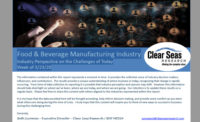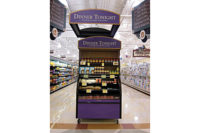Consumers want more from restaurants than a meal
American diners are ordering alternative proteins when they go to restaurants, but don’t count out the hamburger. That’s one conclusion from the Chicago-based market research firm Mintel, whose foodservice team identified and analyzed five trends in the U.S. foodservice industry. The trends hold implications for dairy processors that serve, or wish to serve, this segment.
Mintel Director of Foodservice Paul Pendola said, “In 2016, we’ll see personalization, authenticity and revolutionary new food and drink concepts shape the industry with diner preferences and perceptions front-and-center. Restaurants and brands must continue to understand what motivates consumers to dine out and how to attract those who plan on spending less in the year ahead.”
Trend 1. Unpredictable Proteins. A rising number of consumers are turning to high-protein diets, and while the use of alternative protein sources is on the rise, an American classic still holds a prominent place on menus. Still, the once go-to sources — meat and eggs — are falling out of favor, with more and more consumers turning to alternative protein sources. [Editor’s note: the report does not refer to dairy sources of proteins, such as milk, cheese or yogurt.]
Trend 2. Anywhere And Anytime. Consumers are increasingly eating restaurant-quality food outside of “traditional” mealtimes. When delivery isn’t an option, novel foodservice offerings are stepping in to fill the void. For dinner alone, 61% of consumers say they have purchased ready-made, prepared food from a retail outlet, according to Mintel research. There is a burgeoning demand for speed and delivery, and foodservice operators would do well to set in motion operational adjustments in order to meet consumer expectations. Convenience stores are zeroing in on prepared foods to build revenues: more than one-quarter (28%) of c-store shoppers indicate they visit c-stores to buy made-to-order foods.
Trend 3. Messaging Over Marketing. Consumers are increasingly focused on where their foods and beverages originate, what benefits they offer and how these foods make them feel. Many restaurateurs are addressing those interests on printed menus and websites. The biggest percentage growth has occurred with nutritional claims, up 18% between the second quarter of 2012 to 2015, showcasing consumer interest in food and drink benefits. There has also been a marked increase in geographical claims (16%), which satisfy consumer interest in where their foods and drinks comes from. Ethical claims — up 11% – touch on emotional needs.
Trend 4. Extreme Living.Brands are recognizing that consumers are multi-faceted, and they increasingly find balance by going to dining extremes. For many operators, finding menu balance between high-calorie premium options and portion control can be solved simply by including mini menu options. It’s an idea not as widely explored as one might expect.
Trend 5. New Bar Stars. The same flavor-blending and ethical sensibilities on the dinner plate are also at work in the glass and cup. Kombucha, a fermented tea, is predicted to catch on in 2016. Watch for tea to go the distance in 2106 — mixed with fruits, alcohol and in an assortment of hybrid beverages. Half of consumers think tea-based drinks are healthier than coffee-based drinks, lending to its moniker as a better-for-you offering. Green tea/matcha has the full attention of many, not only for its health benefits, but also its reduced caffeine content.
The complete Mintel report can be downloaded for free at mintel.com.
— Adapted from “U.S. Foodservice Trends 2016
Looking for a reprint of this article?
From high-res PDFs to custom plaques, order your copy today!





